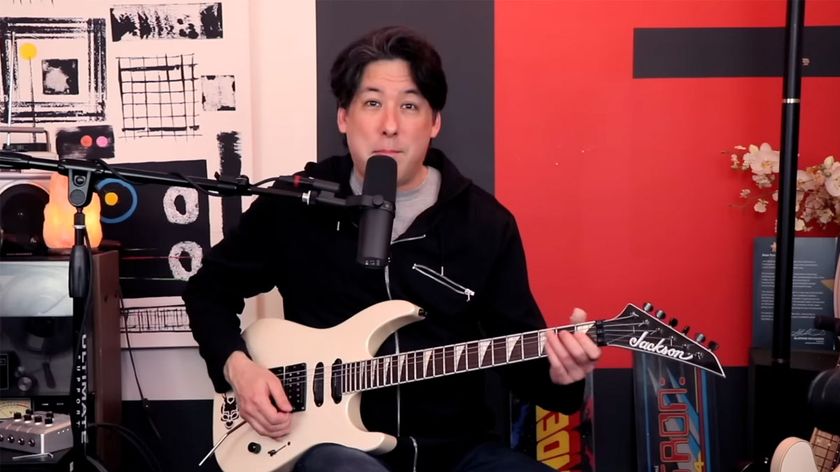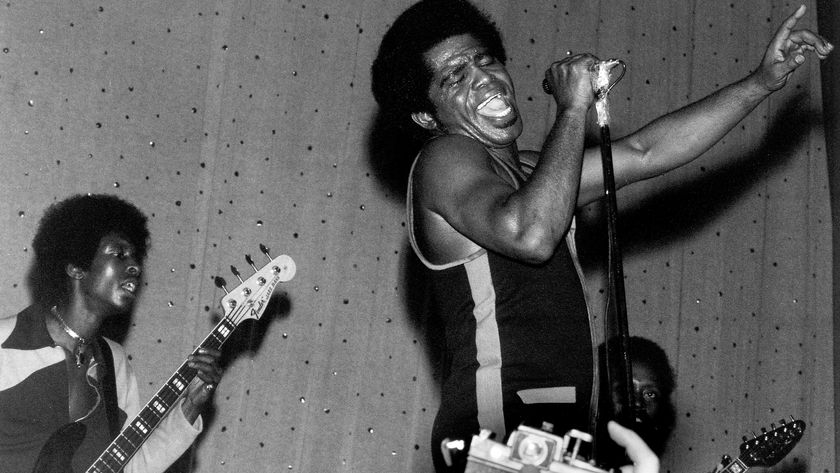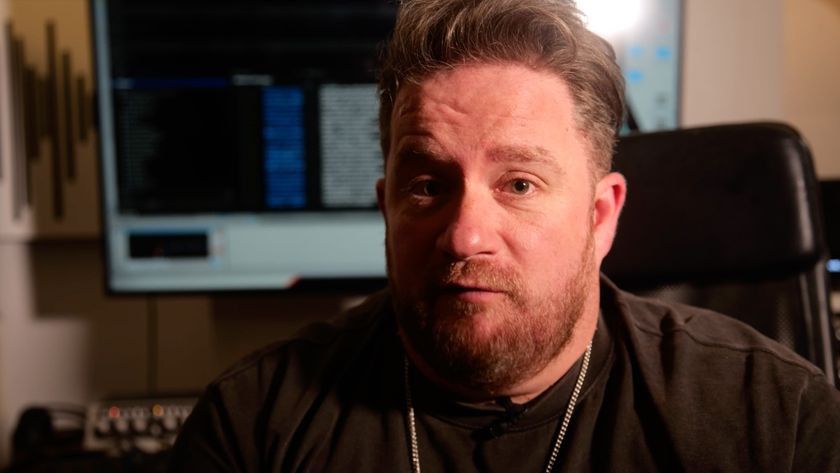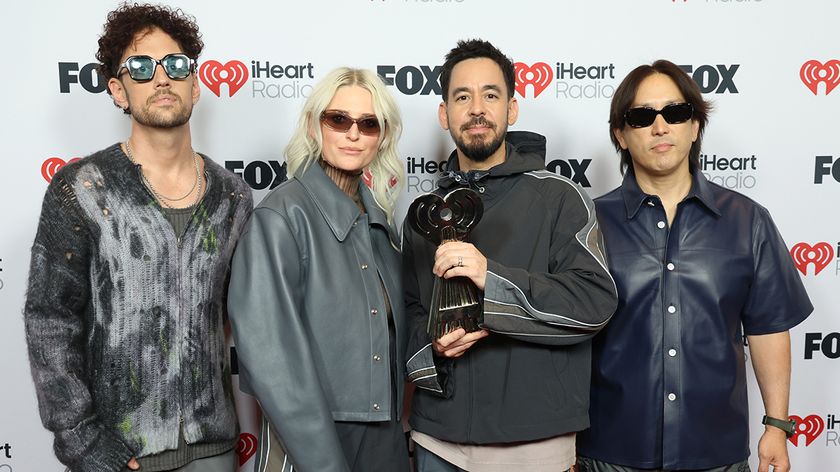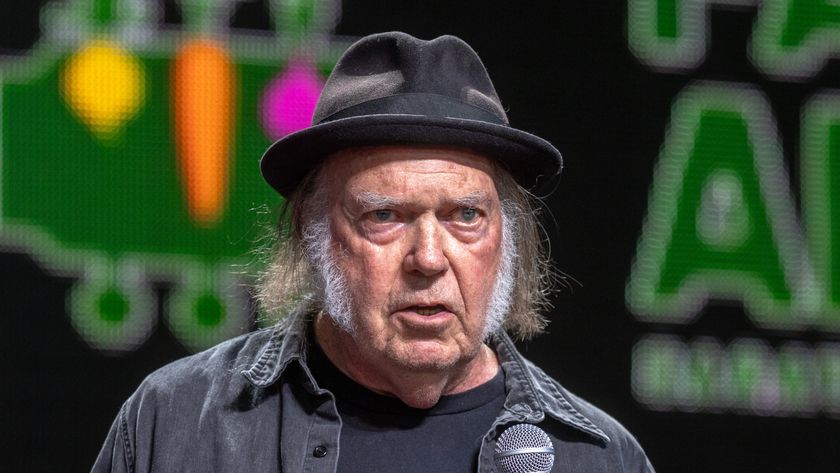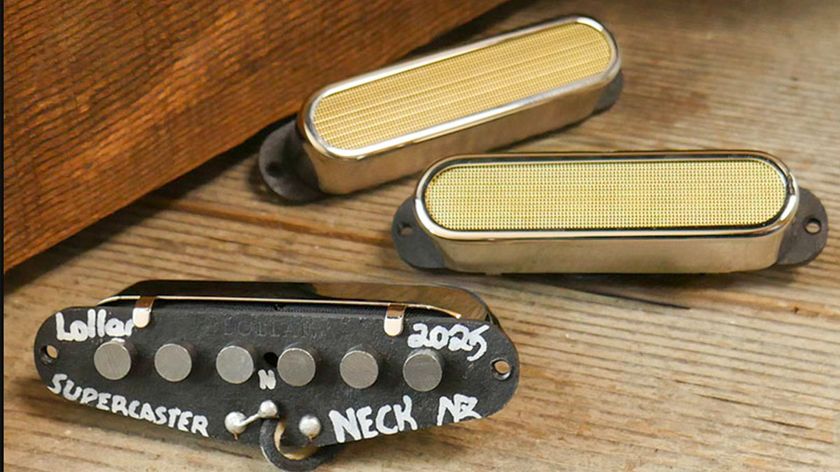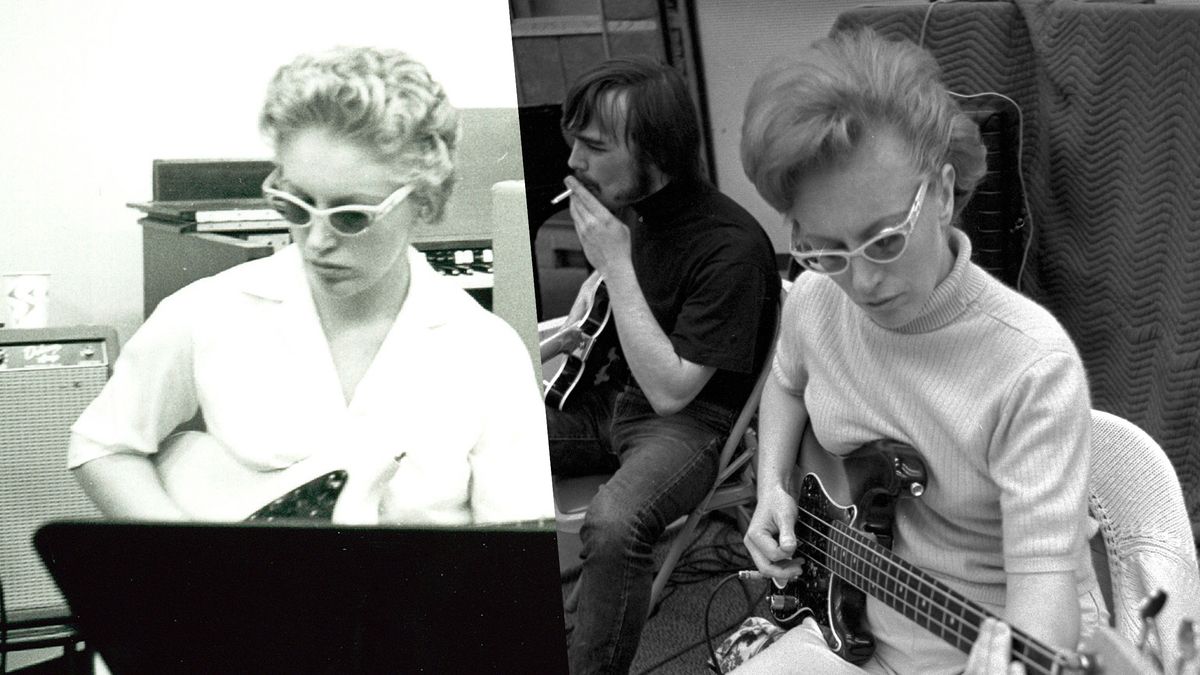
For Carol Kaye, the most-recorded bassist in history, with upwards of 10,000 sessions to her credit, the very idea of picking the highlights of her career is daunting, to say the least.
How many people can go home and say, ‘Yeah, I played with Frank Sinatra today’ or ‘We cut a cool track for The Beach Boys this afternoon’? Not many
Carol Kaye
“I’ve played on so many incredible records and worked with such fabulous artists,” Kaye said when we spoke to her back in 2011. “Calling something ‘my greatest’ or ‘the biggest and best’…well, we’ll just have to roll with it.
“This is a terrific batch of songs, but I might have a whole different list next week,” she stresses. “You know how it is: You turn on the radio and you hear something and you go, ‘Oh yeah! I played on that. That’s a good tune.’”
According to Kaye, session life in the ‘60s was something of an assembly line, where three or four dates a day were the norm. “It got to be a routine after a while,” she says, “but it wasn’t like we were making doughnuts. We were making records, and a lot of them were hits. How many people can go home and say, ‘Yeah, I played with Frank Sinatra today’ or ‘We cut a cool track for The Beach Boys this afternoon’? Not many, I imagine.”
Here, Carol Kaye lists what she considers to be 10 of her greatest recordings, all of them big-time winners. And if she decides to change her mind at some point, hey, she's entitled. When you've played on as many smashes as Carol Kaye, you're bound to forget one or two.
1. The Beach Boys - Sloop John B (1966)
A lot of people don’t think this fits with Pet Sounds. But really, what does fit with Pet Sounds?
“A lot of people don’t think this fits with Pet Sounds. But really, what does fit with Pet Sounds? You can’t even present the argument. All I know is, Sloop John B is a happy tune that really works.
“Billy Strange and Glen Campbell were on guitars. I think it was Billy’s idea to do sort of a two-guitar thing in the front, which Brian Wilson liked a lot. It’s a great band, with Hal Blaine on drums and Lyle Ritz, who’s playing the string bass – I’m playing the electric bass.
Get the MusicRadar Newsletter
Want all the hottest music and gear news, reviews, deals, features and more, direct to your inbox? Sign up here.
“Brian encouraged me to move around with my parts. He liked the bass to be non-static and energetic. What’s funny is, I never knew he was a bassist. I always thought of him as a piano player who knew how to write for other instruments. It wasn’t until years later that I discovered he could play bass.”
2. Nancy Sinatra - These Boots Are Made For Walkin' (1966)
You needed a strong bottom end on a song like this. Boy, what a hit, huh?
“It sure is a famous song. Jim Gordon played the drums. He was a brilliant drummer back in the day. And that’s Chuck Berghofer on double bass along with me – I’m playing electric bass.
“Chuck was asked to play the sliding part that’s pretty much the hook of the song. It took him a few passes to get it just right, where it’s more of a hesitation instead of a straight slide. I’m backing him up on the parts with a Fender Precision. People were very surprised to learn that I could get the right clicks between the notes on an electric.
“Nancy liked two basses on her songs. That might’ve come from Billy Strange, who did the arrangement. But it worked. You needed a strong bottom end on a song like this. Boy, what a hit, huh? You couldn't turn on the radio at one point without hearing 'Boots.'”
3. Sam Cooke - Summertime (1957)
“I played the guitar on this song. Bumps Blackwell had come into a club and saw me playing bebop jazz, and he asked me to play on a record he was producing. I really didn’t want to do it because I liked the clubs, but I needed the money. It wasn’t long till I realized there was more money in making records.
“Sam Cooke was a very nice guy. He was so happy because he just had his first hit record with You Send Me. He was on top of the world. In fact, driving to the record date, I heard You Send Me on the radio, so it prepared me for working with Sam.
“He was an exceptional singer, and he knew how to pick the best material. Because this was my first session, I was a little reserved at first, but Bumps told me, ‘Play some of that stuff you did in the club,’ so I did some fills. Pretty soon, I had it down.”
4. Ray Charles - America The Beautiful (1972)
As a bass player, I knew I had to keep it simple. This wasn’t a song where I was supposed to call attention to the part or move the music
“There’s certain dates you play and you know they're important. With America The Beautiful, it was iconic. First of all, there’s the song itself. But the marriage of the song with the singer is what counts, and Ray Charles singing America The Beautiful, well, you can’t improve on that.
“When we cut this, I kept thinking of Ray’s own struggles with the country. He'd been through so much, from being a blind black kid and all that that entails, to playing the clubs in the South and being booed and having to stay in black-only hotels, to fighting for integration and human rights…I felt like we were telling his own story, not just that of the country.
“As a bass player, I knew I had to keep it simple. This wasn’t a song where I was supposed to call attention to the part or move the music. It was all about Ray. All I had to do was find the right spaces and let him shine. There were a couple of fills I did. I think of them as background singers going, ‘Amen!’ That’s the only embellishment you need.”
5. Ray Charles - In The Heat Of The Night (1967)
“What a great, great project. I worked with Quincy Jones on the film music, playing fuzz bass on a lot of the cues. That was pretty cool. Not many people knew you put fuzz on a bass; they thought it only worked with a guitar.
“Playing the title song with Ray Charles was a dream come true. Ray was so easy to work for. I thought he was a real salt-of-the-earth kind of man. We traded a lot of jokes back and forth. He was a good kidder.
“We cut the track at Ray’s studio. I asked to have his vocal way up in my headphones because that’s what I wanted to play to. On some records, you want to cook with the band. With Ray Charles, you wanted to cook with his singing. His vocal was the most important thing, so that’s what you had to support.”
6. Glen Campbell - Wichita Lineman (1968)
Glen sang his butt off. He really captured the words and set a mood
“Jimmy Webb, the songwriter, played piano on the track. I always thought he was a great talent. It’s a shame that he had to suffer so much to create, but that’s the way life and art can be sometimes. Not always fair.
“There wasn’t any music in front of me, just some chord changes. I played the roots and tried to let the tune unfold. When you have a great song – and I could tell right away that Wichita Lineman was very special – you try to create a background for the words. You don’t want to get in the way.
“At one point, though, Jimmy Webb stopped me and had me do some fills. Then it was decided that I should start off the song. So that’s what you hear: me on my bass, playing this little bouncy part that introduces the number.
“Glen sang his butt off. He really captured the words and set a mood. It was incredible to see him go on and become such a success. A truly nice man."
7. Lou Rawls - Natural Man (1971)
“Lou was funky as heck! He was so much fun to play for. We had a great time. Lou always wanted me on his dates. We definitely bonded. We had a long history, too, because he sang background vocals on the Sam Cooke dates I did.
“This is just a funky tune, a really good feeling. That’s Earl Palmer on the drums. He got a good groove going on, and I locked in with him like you wouldn't believe. I always enjoyed playing with Earl, especially on something cool like this.
“And everybody knows, you can’t beat Lou’s voice. He could make any song his own. What a special artist.”
8. Barbra Streisand - The Way We Were (1973)
I was getting pretty bored playing such a simple part, so after 31 takes I just decided, ‘Oh hell, I’m gonna go for it.’
“The single of this song is the one to hear. There are so many different versions from the movie out there, but that’s the sweet stuff. All the versions have the same strings, but on the single you can hear the solid drums and the bass part that I created.
“It was all cut live - strings, the band, and Barbra sing right there with us. I think we did 32 takes, which was quite a lot. I was trying to work around Barbra’s vocals, but Marvin Hamlisch, the producer, kept getting annoyed. ‘Stick to the part, Carol. Don’t ad-lib,’ he told me.
“I was getting pretty bored playing such a simple part, so after 31 takes I just decided, ‘Oh hell, I’m gonna go for it.’ [laughs] I played some real interesting lines and fills. Barabra’s voice held this long note, and the feeling was electrifying. She gave it her all, I gave it my all, and the whole thing came together.”
9. Frank & Nancy Sinatra - Somethin' Stupid (1967)
“’Somethin’ Stupid’? Well, we thought the title was pretty dumb. [laughs] Who would write something and call it ‘Somethin’ Stupid’? But the song turned out to be a real winner, and when I heard the lyrics, the title made a lot of sense.
“It’s a fun song, but it’s also a love song. When Nancy sang it with her dad, boy, that was powerful. The two of them had such father-daughter affection for each other. It was really great to see.
“It was funny, though: Frank was all business. I think we only did a couple of takes and he was out the door. He did what he had to do, he liked what he heard, and he didn’t hang around.
“We had a really good band on this one: Hal Blaine on drums; Chuck Berghofer on electric bass – I played string bass; and Al Casey on guitar, doing some real nice stuff. A wonderful recording.”
10. Joe Cocker - Feelin' Alright (1969)
We played our hearts out on that song, and we nailed a great take. Then an engineer told us that we had to do it again – somebody had forgotten to roll the tape!
“This was with Paul Humphrey on drums and Artie Butler on keys. Artie started out the riff, and Paul and I joined in. We got such a groove. The whole thing just rolled. Before you knew it, we were locked in beautifully.
“Joe Cocker was in the studio singing with us, which was great. In my opinion, he’s one of the only white guys who can really sing like Ray Charles, so to have him right there, working off of everything we did, it was such an inspiration.
“We played our hearts out on that song, and we nailed a great take. Then an engineer told us that we had to do it again – somebody had forgotten to roll the tape! [laughs] Oh, my goodness! You're kidding me, right?
"Well, we did it again and got it just as good. No, we got it really good. But you know what? There was something about the version that didn’t get recorded, the one that nobody will ever hear - it was THE take! [sighs] Oh, well..."
Joe is a freelance journalist who has, over the past few decades, interviewed hundreds of guitarists for Guitar World, Guitar Player, MusicRadar and Classic Rock. He is also a former editor of Guitar World, contributing writer for Guitar Aficionado and VP of A&R for Island Records. He’s an enthusiastic guitarist, but he’s nowhere near the likes of the people he interviews. Surprisingly, his skills are more suited to the drums. If you need a drummer for your Beatles tribute band, look him up.
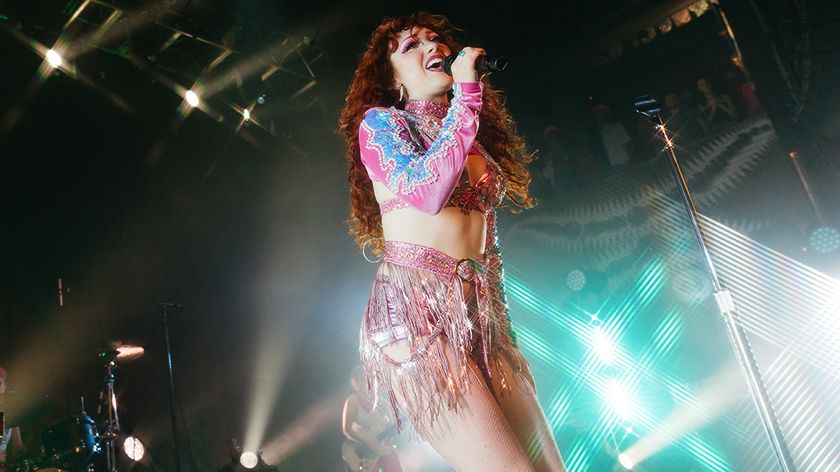
“The solo is very recognisable and crucial to the song”: How Chappell Roan’s former touring guitarist handled the Pink Pony Club guitar solo live on stage
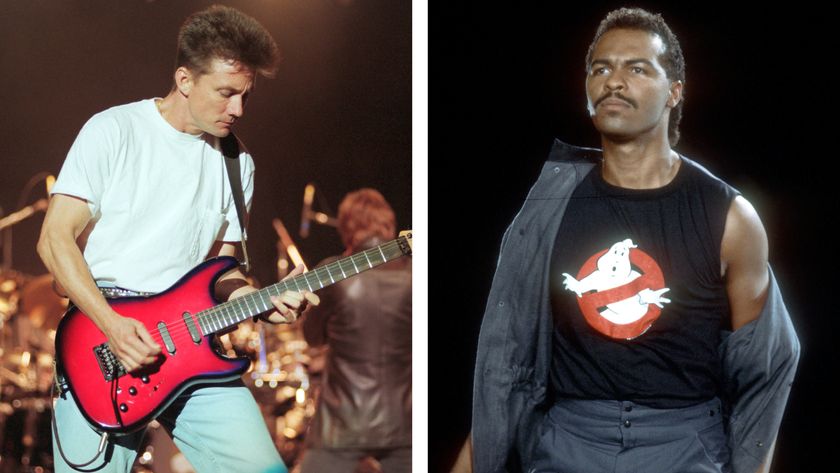
“I am under an NDA, but I think everybody knows what happened”: Former Huey Lewis and the News guitarist Chris Hayes on that Ghostbusters plagiarism dispute



